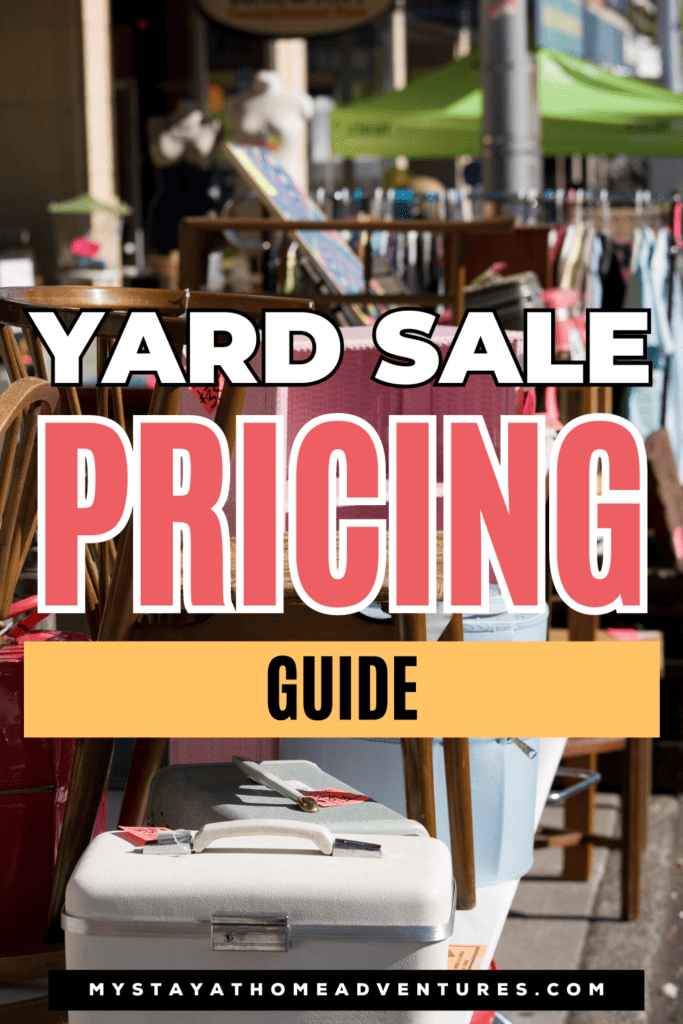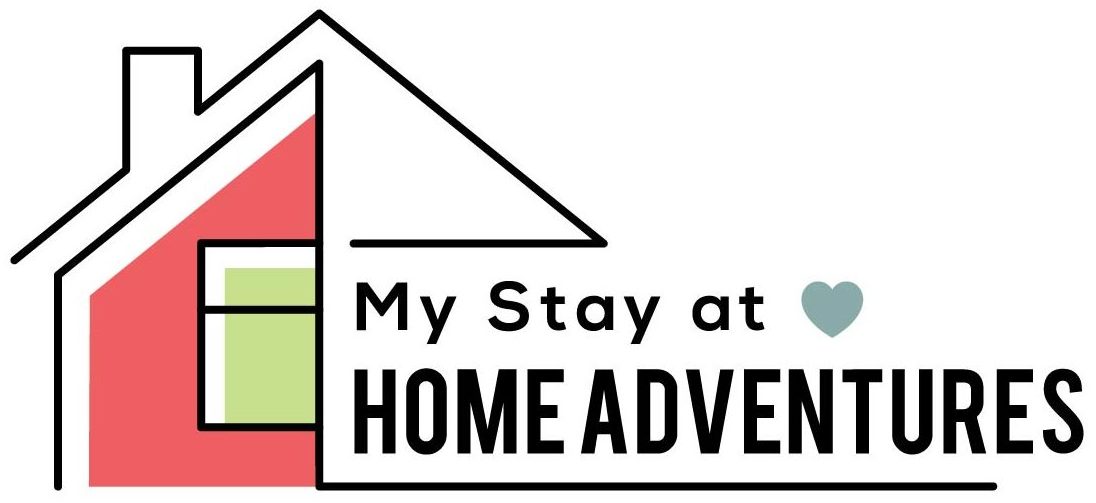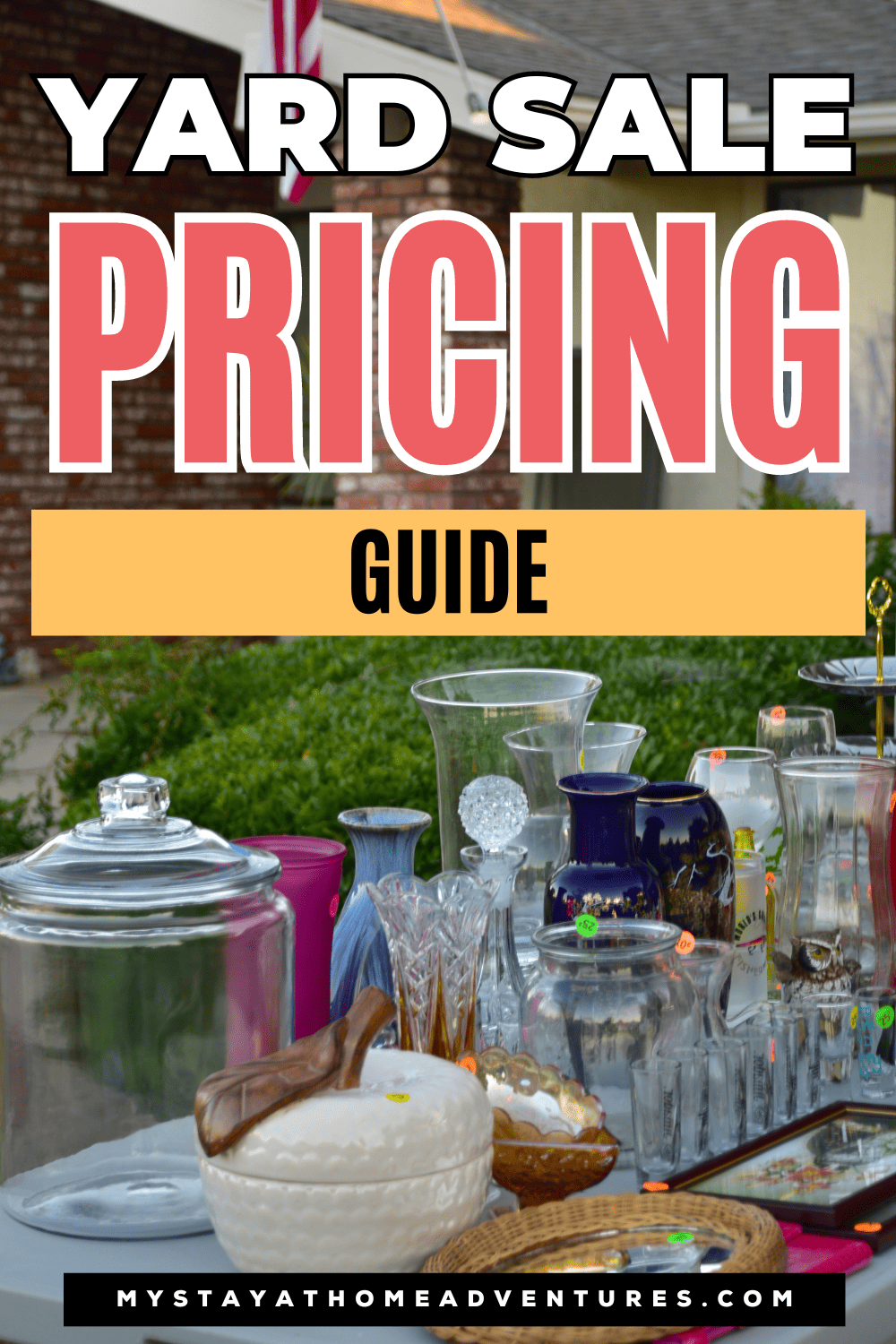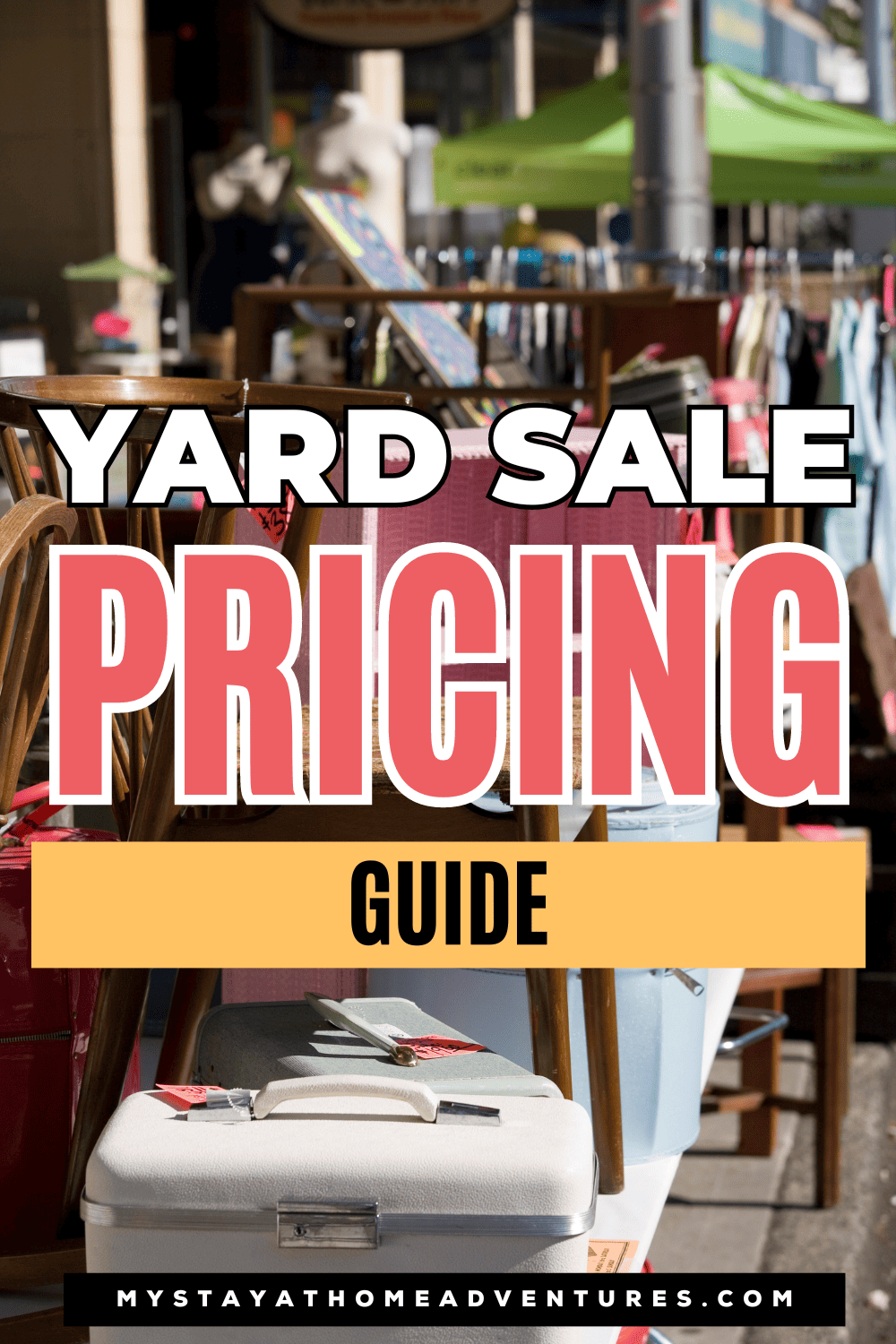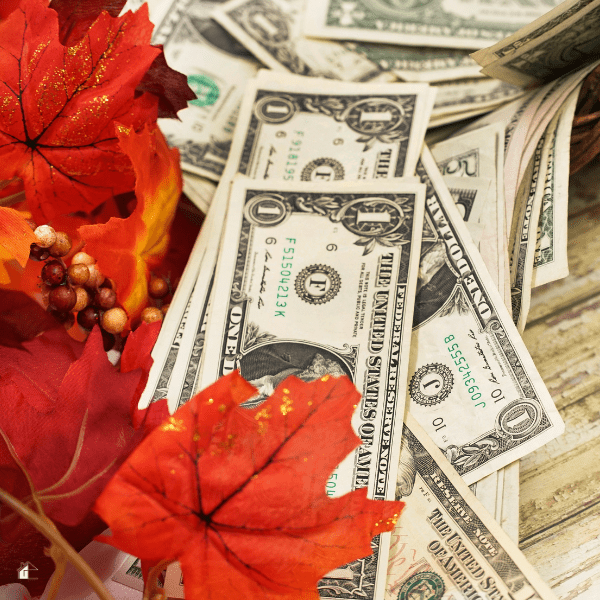Yard Sale Pricing Guide for 2025
This post may contain affiliate links which might earn us money. Please read my Disclosure and Privacy policies hereAre you looking to spruce up your yard sale? Have you ever been in need of guidance when it comes to pricing items for a successful yard sale? Well, look no further! We will provide you with helpful information and tips for pricing items for a successful yard sale.
From how to determine the right price for each item to techniques for setting prices that will encourage buyers, we've got you covered.
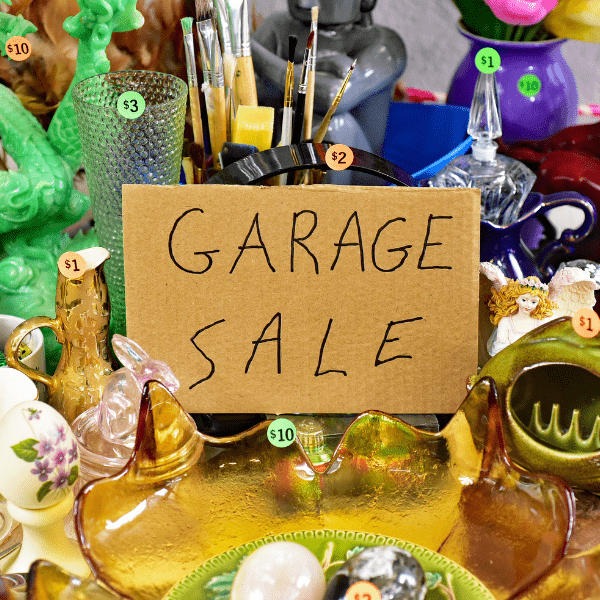
Every year, an estimated 6.5 to 9 million Americans have garage sales, selling secondhand things from or near their homes. Typically, around one in every four Americans holds a yard sale to recycle household goods, earn a few dollars, and make friends with neighbors; buyers visit to buy low-cost items, haggle for fun, and find the occasional yard sale gem.
Why You Will See Price Increases at Yard Sales in 2025
If you've been noticing that yard sale prices are creeping up, you're not alone—I noticed it too, and it seems like everyone is talking about it. Several key reasons are influencing these changes, making it more expensive to find second-hand treasures.
The growing number of resellers purchasing items at yard sales to flip for profit on platforms like eBay, Poshmark, and Facebook Marketplace has increased demand, allowing sellers to set higher prices.
Also, inflation continues to impact the cost of everyday goods, pushing up the prices of second-hand items as more buyers look for affordable alternatives to new products.
On top of that, ongoing 2025 tariff threats on imported goods may lead to higher retail prices, making yard sale bargains even more valuable and competitive.
These combined economic pressures mean that whether you're a buyer or a seller, yard sales in 2025 will look a little different than in previous years.
That being said, yard sales remain one of the best ways to clear out unwanted items while making extra cash. If you’re looking to declutter, earn some extra income, or connect with your community, hosting a yard sale is still a worthwhile and rewarding effort.
So, get ready to make the most of your next yard sale!
You might enjoy these posts:
- How To Bring Traffic To A Yard Sale
- 17 Things That Sell Well at Yard Sales (and will make you money!)
How do you calculate garage sale price?
To price items at a yard sale, start by considering their original retail value and current condition. In 2025, most items sell for 7-15% of their original price, while premium or high-demand products can be priced as high as 25-35%.
For instance, if an item originally cost $30, it would have typically been priced at $3 in past years. However, with the current pricing trends, that same item may now be listed at $5 or more, especially if it’s in excellent condition or from a sought-after brand.
To make the most money at a yard sale, price luxury brands and well-maintained electronics higher, as they tend to hold their value. A designer handbag that originally retailed for $200 can be priced between $50-$70, offering a great deal while bringing in a solid profit. Setting fair prices based on quality and demand ensures items sell quickly while maximizing earnings.
Finding the right balance between competitive pricing and profitability remains key. Keeping prices too high may deter buyers, while pricing too low could leave money on the table. Thoughtfully setting prices ensures steady sales while keeping buyers engaged.
When hosting a yard sale, it's important to price items correctly in order to maximize profits. Here is a handy guide to help you determine the right prices for your items:
Here’s the updated table with 2025 price increases:
| Item | 2025 Price Range |
|---|---|
| Accessories | $0.50 – $2.00 |
| Sports Equipment | $15 – $60 |
| Shoes | $3 – $15 |
| Used Clothing (per piece) | $2 – $12 |
| Furniture | $15 – $75 |
| Antique Furniture | $75 – $250 |
| Kitchen Appliances | $20 – $60 |
| Decor | $1 – $7 |
| Lamps | $7 – $15 |
| Throw Pillows | $2 – $5 |
| Wall Décor | $2 – $25 |
| Used Bicycle | $60 – $125 |
| Mirrors | $25 – $50 |
| Throw Rugs | $3 – $7 |
| Area Rugs | $25 – $40 |
| Baskets | $1 – $3 |
| Curtains (pair) | $5 – $12 |
| Candles | $1 – $3 |
| Hand Tools | $7 – $25 |
| Garden Tools | $7 – $30 |
| Hardcover Books | $2 – $5 |
| Paperbacks | $1 – $3 (2 for $5) |
| Old Books (each) | $2 – $7 |
| CDs | $1 (2 for $3) |
| DVDs and Blu-Ray Discs | $2 for older films |
| Vinyl Records (each) | $3 – $12 |
| Video Games (each) | $7 – $25 |
| PS1 Games | $2 – $5 |
| PS1 Controllers | $3 – $7 |
| Memory Cards | $3 – $7 |
| PlayStation 2 Console | $30 – $50 |
| PS2 Game Consoles | $5 – $10 |
| PS2 Controllers | $5 – $10 |
| PS2 Memory Card | $5 – $10 |
Here are some pointers to learn the best strategies to optimize your yard sales while remaining stress-free. Please note that these prices are just guidelines. Prices can vary based on the item's condition, brand, demand, and your eagerness to sell them. Also, consider the rarity and popularity of the items when setting your prices.
Compile a list of similar items and their prices
- Do some online research to find out what similar items are selling for on sites like eBay or Etsy. This will give you an idea of the current market value.
- Compare the condition of the items you are selling with those for sale online and factor in any differences in price accordingly; for example, if there is wear and tear on an item, you might want to lower your asking price accordingly.
- If you're selling something outdated (like electronics), try looking up reviews to determine what the older model was worth when it was released and adjust your asking price accordingly.
- Keep track of local yard sales and flea markets that occur regularly to compare prices with what people are selling at these venues – this will give you another reference point for pricing your own items fairly.
Assess the condition of each item and adjust the price accordingly
- Examine each item closely for any signs of wear and tear, including stains, fading, tears, or discoloration.
- For electronics, switch them on to check for functionality. You may need to reduce the price accordingly if sound or picture quality issues exist.
- Consider how old the items are; if they’re from a previous decade, you might want to lower the price slightly to make them more attractive to potential buyers.
- Be honest about the condition of your items – don't try and overplay any small flaws as it could lead to customer dissatisfaction later on down the line!
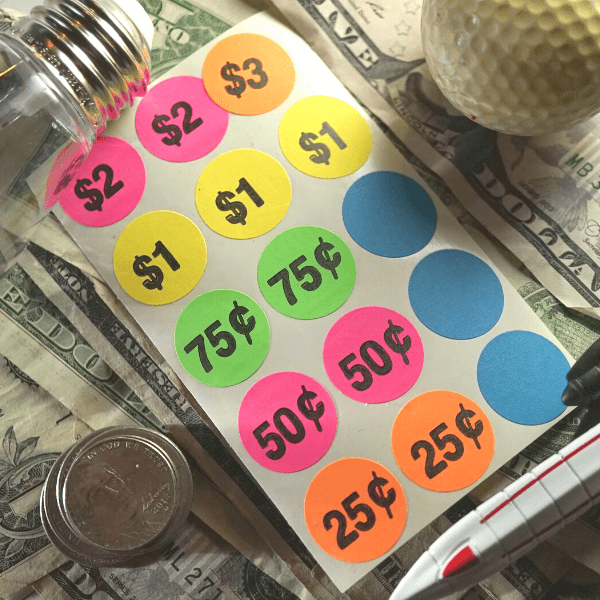
Ask yourself if the price is fair.
When pricing items for your yard sale, it's important to ask yourself if your price is fair. This will help ensure that you're not overcharging customers and that you're also getting a reasonable amount of money for each item.
The price is too high, and people are less likely to buy; the price is too low, and you risk leaving money on the table. Assessing the condition of each item and comparing prices with those found online or at local sales can help give you an idea of what a fair price might be.
Offer discounts on multiple small items or high-value items.
Offering discounts on multiple small or high-value items when pricing a yard sale is a great way to attract more customers and increase sales. This can be done by grouping together related items, offering discounts for buying more than one item, or creating special bundles with items that have greater value when bought in bulk.
Discounts can also help motivate people to take action and make a purchase, so they won't be as likely to wait until the last minute to buy what they need.
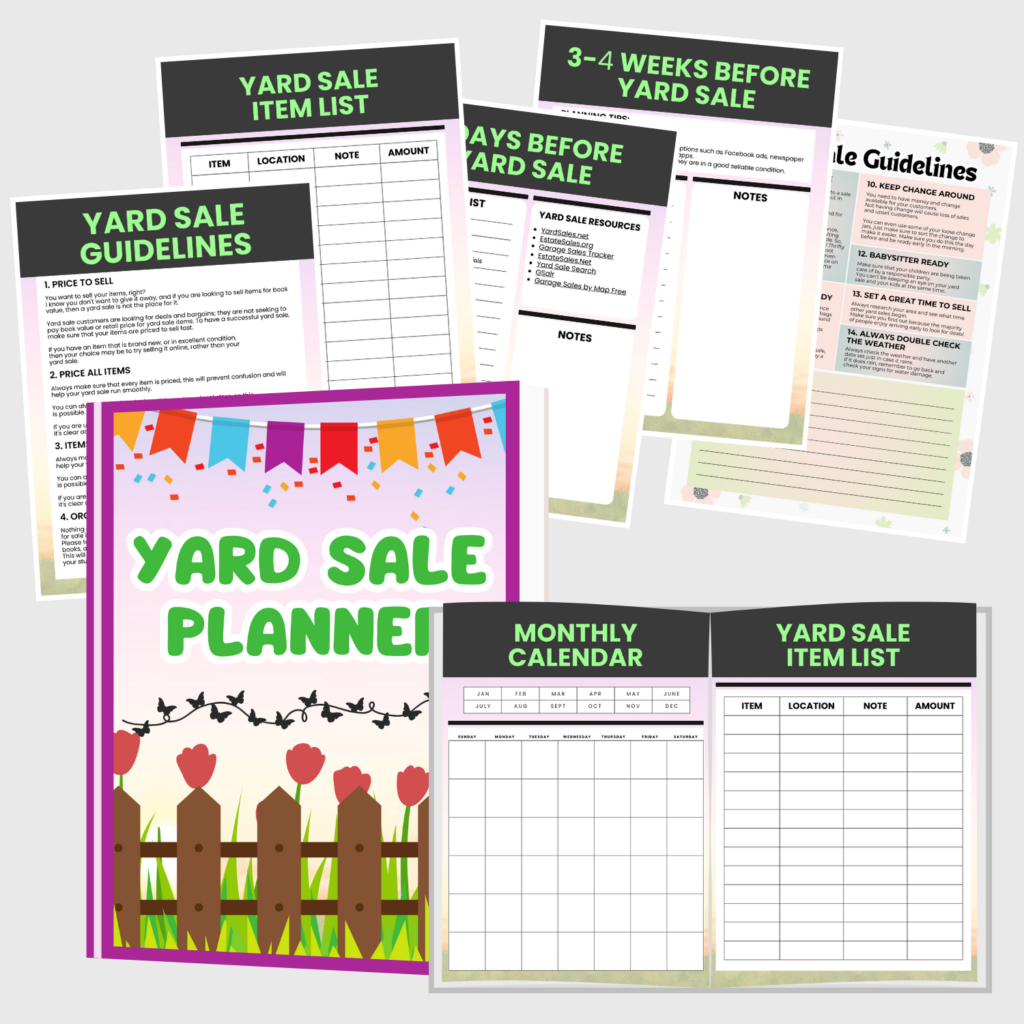
How much should shoes be at a yard sale?
When pricing shoes for a yard sale, it's important to consider the condition and brand of the item. Shoes that are in excellent condition and from sought-after brands can be priced higher than shoes that have seen more wear and tear or are from less popular brands. Additionally, if the shoe is trendy or new, it can also be priced higher.
In general, you'll want to price shoes based on what you believe people will pay, given the condition and type of shoe. Generally speaking, you should start at around 50% of the original retail price and then adjust lower or higher depending on the quality and other factors affecting its value.
For example, if you have a pair of designer sneakers that were originally $100, then you could start by pricing them at $50. However, if they're well-worn or out of season, you may need to go as low as $25 or even lower in order to find a buyer.
You might enjoy this post: How to Write a Garage Sale Ad (With Examples)
